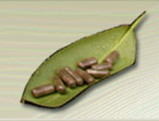 Loading... Please wait...
Loading... Please wait...Providing 25 Years Of Premium Service
Storewide Sale - Save 20%
Why Our Bodies Are Like Rivers
Posted by Sara Bowes, LAc on 23rd Aug 2013
With regards to medicine — especially holistic systems like Ayurveda and other traditional medical frameworks, there is rarely a cure-all, one-size-fits-all diagnosis or treatment. Within the parameters of a holistic mode of healing that considers the whole person as an integrated, orchestrated system rather than a patchwork of isolated symptoms and organ systems, every aspect of the patient must be considered, rather than simply the symptom alone. It follows that ten patients presenting with the same symptom (i.e. headache) will more often than not require ten entirely different remedies or treatments. This is because a truly holistic medicine rarely treats just the symptom itself, rather it addresses the underlying pattern and constitutional picture, which will always be the more effective and lasting, and ultimately healing treatment. After all, there is a plethora of reasons why a headache will manifest. In conventional Western medicine where the parts and symptoms are primary, and the whole is often overlooked, ten headache patients are often prescribed a similar “headache treatment,” for example.
Depending on how you look at it, this difference in approach renders holistic medicine somewhat complicated in that there are few things that can be said to be good for everyone, or every headache, in this case. That said, there is a small handful of principles that can be applied in a general sense to promote the health of all. One of these is that all pain—whether physical or emotional—arises from stagnation. Movement and variability are two constants that we can say are necessary for health.
These concepts are not unique to any esoteric or ancient system. The benefits of regular exercise dominate the headlines of modern medical literature; traffic is synonymous with discomfort; any human being can attest to the relief experienced when seeing one’s way out of a stuck emotional or thought pattern; even the human heart itself likes not only to be moving, but also some variability heart rate variability—the variation in the time interval between heart beats—has been shown to directly correlate to health, such that the less variability is correlated with greater incidence of disease. And because any holistic medical system views the physical, emotional, mental, and spiritual bodies as intimately connected, stagnation on any of these levels can in turn affect another, such that mental stuckness or rumination for instance is not only uncomfortable in its own right, but it is often the cause for physical disease as well.
While it is fair to say that stagnation is the culprit for all pain and much disease, it is necessary to recognize that a variety of reasons exists for the stagnation itself. As with most aspects of the human body, it is often helpful to turn to nature as a means of deeper understanding. Imagine a river—flowing, crisp, unobstructed, flexible, full, clear, adapting to the changing seasons. Rivers like to be moving, and even a little bit unpredictable. Various factors, however, can interrupt the river’s ability to flow healthily. Cold temperatures will turn the water to ice; hot weather will dry the river out completely; trash and pollution will muddy the river and slow it down; not enough precipitation during the winter leads to scanty flow in the spring; falling timber or a dam will cause obstruction. The same applies to the human body—stagnation can result from a wide variety of factors. Constitutional imbalance, toxicity, excess weight, poor diet, nutrient deficiency, environmental factors, emotional and mental inflexibility, injury, prior or existing illness comprise some of the possibilities. The implication here is that it is important to determine first what is the underlying cause of the stagnation before pursuing treatment. Though it is likely that both a kapha constitutional type and a vata constitution will suffer from stagnation and related manifestations, treating both persons the same would likely aggravate one of the situations. The kapha type, for instance, will benefit from aromatic and pungent spices and herbs, as these are generally dispersing and drying, which is helpful for the type of sluggish, overloaded type of stagnation that typically plagues kapha. Aromatics for the vata, however, will aggravate the tendency toward general dispersion that characterizes their mental and physical states. To restore healthy flow in a vata constitutional type, warming, calming, tonifying, and sometimes moistening remedies are indicated—many of which could potentially aggravate the kapha constitution. This example highlights the necessity of determining constitution and/or underlying pattern prior to opting for treatment. No matter the situation, however, thinking generally about restoring flow and introducing movement into a stuck system will always be helpful, however this may look for your own individual constitutional needs.















